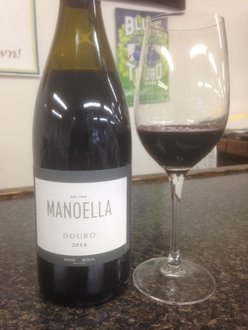 A returning favorite from a vintage ago, further cementing the status of Portugal as a great source of wines other than their famed Ports. The growth and improvement of Portuguese wines over the last few decades has been partially through necessity, but also simply an improvement on the potential that has always been there. The light, crisp white wines of Vinho Verde and the fortified Port wines of the Douro are internationally known, and deservedly so as they are fantastic and distinctive. But diversity is important, and very few wine regions can survive being known for 'just' one type of wine (Champagne may be the one exception). Further upriver from the city of Porto, the Douro River is called the Duero in Spain, and their success with rich, modern styled reds have a very similar character to those now coming from many vineyards that once were devoted to Port. The great thing about these trends is that the change of focus still involves the native varieties that already existed. Nothing is being replanted, just re-purposed, so mature vineyards can quickly become the source for new wines full of flavor. Built from the traditional base grapes for Port (Touriga Nacional, Touriga Franca, Tinta Roriz, Tinta Francisca), this pours a deep purple and is equally deep and dark on the nose, loaded with blackberries and dark spice, with hints of pepper and eucalyptus or cool mint as it opens up. The palate is equally substantial but surprisingly polished, silky even for it's youth, which helps bring out the dark fruit without astringency or getting into the sweeter flavor profiles. Those that like a wine with a bit more thickness and chest-thumping intensity may prefer a Ribera del Duero from further upstream, but this is impressively user friendly in what it delivers for the price, great as a nicer cookout option that doesn't need hours of decanting beforehand to be impressive.
0 Comments
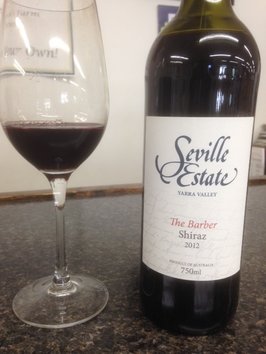 This is a call back to a producer we've done in a few recent Select Six and Insider Picks with their Chardonnay and Pinot Noir (still available, still GREAT values), and while many may think Australian Shiraz doesn't have a lot of surprises left we are always looking for an opportunity to provide a new perspective. Victoria surrounds Melbourne and is a relatively mild climate, receiving cooling influences from both the Tasman Sea and Great Australian Bight. The conditions are similar to some of the Californian coastal regions and South Africa's Cape, which are both well regarded for their production of Chardonnay and Pinot Noirs. The Yarra Valley sits just outside the city, much as Napa does with San Francisco/Oakland, and their wine industry has evolved into a tremendous travel destination as well as their 'eat local' food and farm to table scene. Their biggest problem for us East Coasters is that there are so many other sources for their style of wine between here and there; we have direct lines from the Rhone, South Africa, and California that flood our market with all sorts of spectacular wines. This wine we are offering deserves attention at its usual mid-$20 retail price, but it was getting lost in the shuffle, so we have the chance to bring it to you for a little bit better price. OK, a LOT better price. From the first pour it's obvious this is not the stereotypical Shiraz, with much cooler red fruits on the nose, almost tart red cherry and eucalyptus notes, and eventually getting in some dark raspberry notes as it opens up. Lots of the warm climate Shiraz throw out everything they aromatically the moment they're opened, but this has lots to offer with patience. The palate is impressively polished with very silky dark tannins that allow all the savory red and black fruits to cross the palate with almost no hard edges and zero sweetness or thick extraction. Which isn't to say this wine is 'light', either. It just doesn't fall into what most would consider the usual Aussie wine mode, instead paralleling wines from Crozes Hermitage in the Rhone or the cooler climate efforts from California. A delicious value for the limited time we have it at this price. 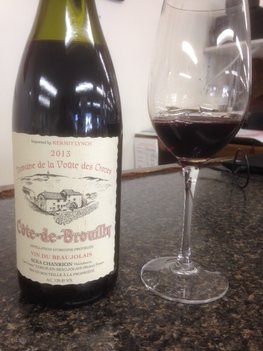 Most people only think of aging the the 'blue chip' wines in their cellar, like Bordeaux, Burgundy, Barolo, and Californian Cabernets to name but a few. They will often then quickly wonder why they have a collection of many cases of wines and NONE of them are ready to drink for another 6-10 years. Another one of our favorite Wine Warehouse lessons is how well great wines from lesser reputation growing areas can do with some time in the bottle, and what's even better is that they rarely need the extensive cellaring to show those results. People think most Beaujolais is fading out within a year or two of the vintage, so why would they want to bother hiding any away? At the bottom end, you would be right, but the great producers are hidden gems that not only survive but thrive with some time in the cellar. Chanrion is a part of the legendary Kermit Lynch portfolio, whose Beaujolais producers are among the most important in the region over the last 30+ years. A single 6.5 hectare parcel of 50+ year old vines is all this one woman operation works, but it produces an exemplary wine every year that stands among the best produced, and a wine that has the track record to evolve for a decade or more. Plus, having received some 'end-of-vintage' pricing, we can bring this wine just starting to mature to you for $6-$8 less than its usual price. Though not as 'hyped' as the vintages on either side, this '13 has loads of color and a full aroma of dusty cherries and soft strawberry fruits, with that savory side of herbs and salty meats only found with the more artisan Beaujolais producers that are using native yeasts which don't create that 'bubble gum' fruitiness too often found in the larger producers. The palate is still tart and lively with nice weight that shows off the red fruit skin tones, and grows more complex as it opens up, starting to show the earliest signs of bottle time with some Pinot Noir-esque earthy tones. As it opens up the subtle complexity continuously changes and evolves but never looses the refreshing tart lip-smacking tart tones that shows this still has a decent amount of life ahead. This is the type of wine that can be played with for at least up to a decade past the vintage, always providing something new and interesting to go back to, and you would never have expected it from a Beaujolais. 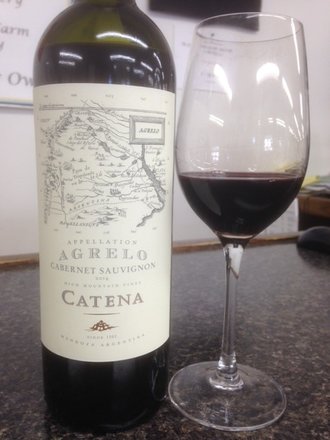 Fans of Californian Cabernet Sauvignon and 'New World' styled Cabs in general are always looking for the next good deal. They are conditioned to be on the lookout because the usual pattern is 1) wine is found at good price, 2) wine is 'discovered' and becomes popular, and 3) price goes way up in 2-3 vintages due to demand, or quality goes down trying to expand volume. Lather, rinse, and repeat year after year. We often recommend people experiment with some of the Argentinean Cabs, as they often have strong American wine-making influences that come across in the flavor and character. In particular Catena Zapata stands out for their history with Napa wine maker Paul Hobbs (early Opus One, Simi wineries) and their commitment to quality well before others in Argentina. They have long been the front-runners for identifying the very best sites and creating some of the most heralded wines from the Mendoza in their 'Alta' series for Cabernet, Malbec, and Chardonnay, as well as the higher end single vineyard programs. Now they are bringing that experience back for the more everyday wine drinker to enjoy in their 'Appellation' series. These wines identify smaller climates inside Mendoza that are particularly noteworthy for growing certain varieties due to unique soil and climate characters. In much the same way people look at Napa, these bottlings are helping to create a much more detailed picture into the diversity the Mendoza region can provide wine drinkers. Agrelo is a small town in the Lujan de Cuyo district that has a long history as the center of the high end wine world in Mendoza (think Oakville/Rutherford) in Napa). The higher altitude and sandy well drained soils are ideal for bringing Cabernet Sauvignon to a consistently high intensity level, and this absolutely delivers on those promises. Deep purple color in the glass, the dusty dark fruit and pencil lead aromas jump from the glass almost immediately, with deeper darker berry character evolving over several hours. In the mouth the fruit is both intense and surprisingly agile, with very fine tannins and a nice pop of acidity that brings out a lot of lively red fruits across the palate. A noticeable and significant step up from their regular Mendoza bottling, this doesn't NEED decanting to soften the tannin or oak presence like so many other younger Cabs, but deserves time to full appreciate the quality possessed for a wine at this price point. This is a classy Cabernet and a true value. 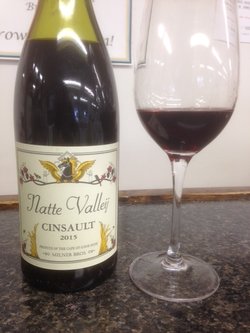 From a taste and flavor perspective this is a wine that delivers a bit of a unique profile but lots of quality for the adventurous; from a wine geek/historical perspective it's one of the most interesting wines we've had in the store. The Cinsault grape is known as a workhorse grape in both the southern part of France and, in the past, South Africa as well, where it was commonly known as "Hermitage'. With the consumer popularity of other grapes like Cabernet Sauvignon and Merlot taking the lead, this style of wine largely disappeared from the market. But the trends always seem to swing back and forth, and the popularity of lower alcohol and less extracted wines are beginning to come back in vogue. If you try to make Cinsault a featured grape and vinify it the same way one would a Syrah or Grenache (going for richness and intensity), the wines can be underwhelming, with the natural earthiness coming out as hard edged. It actually works better with a softer wine in mind; think 'Hearty Beaujolais', with an emphasis on getting the flavors and textures in harmony. Pale ruby in the glass the vibrant natural red fruits pop quickly from the glass, full of dusty cherry and cranberry tones, no jammy or sweet character at all just pure 'off the vine' flavors. On the palate the initial weight and fruit is bigger than a Beaujolais, but the texture is where there is lots of comparison with the super fine tannins and tart lip smacking acidity that presses through on the finish. There is also a lingering cranberry and gamy/salty savoriness that just screams for food to be put in your mouth and join in. Like Beaujolais it's a great partner for cured meats, but also has the stuffing to push up towards something like a seasoned pork loin or peppery meats. |
The Best of the Best.We offering free tastings on these wines in the store every Thursday and Friday, and a 10% discount off the retail price through the duration of the day. Come on by and give them a try! Archives
July 2024
Categories |
Location |
|

 RSS Feed
RSS Feed